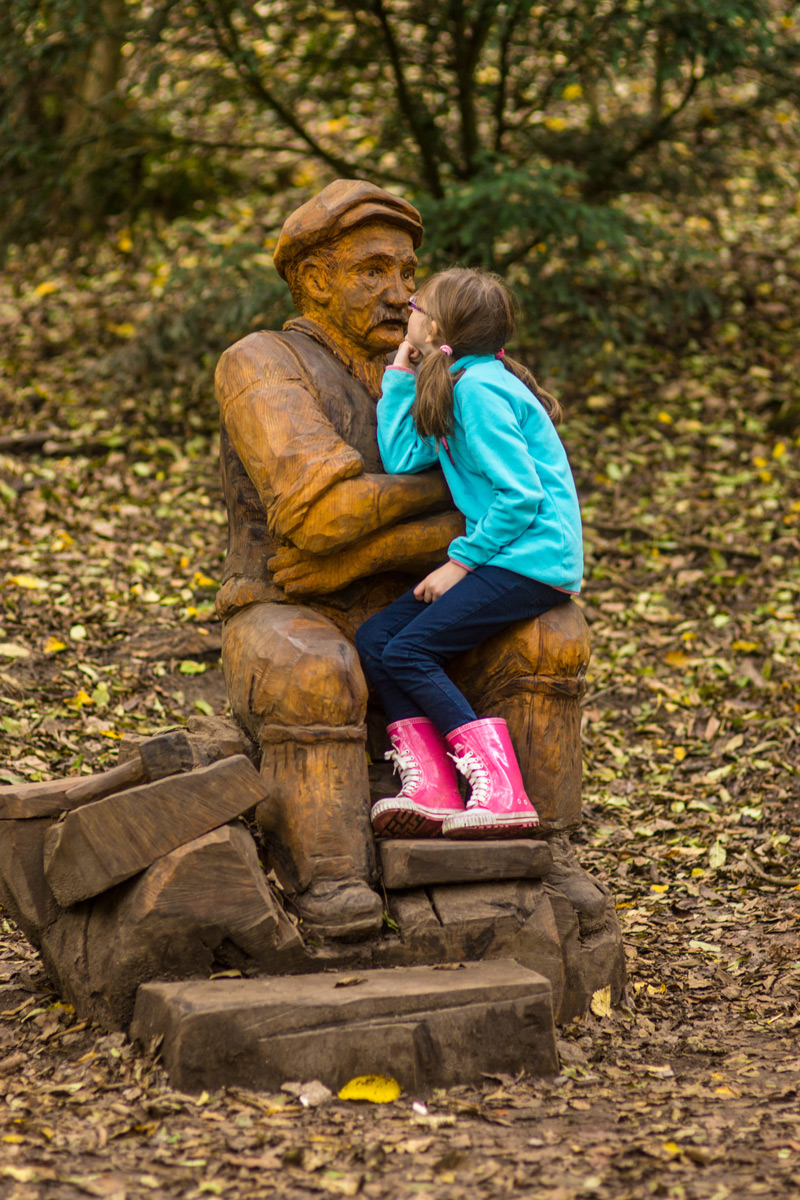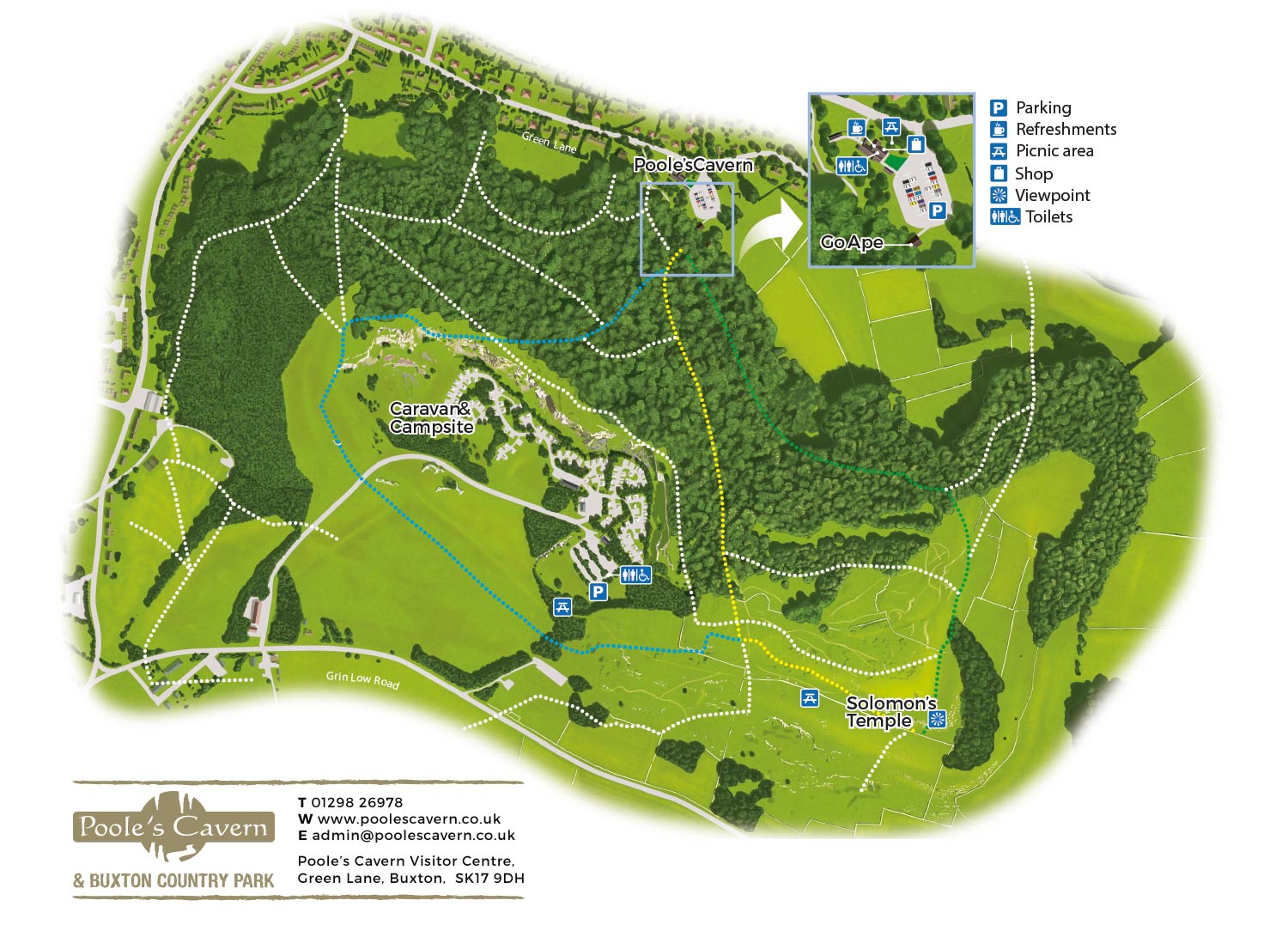
Pause here for a well-deserved breather and enjoy some spectacular views across the High Peak. Looking beyond the impressive Dome of the former Devonshire Hospital (now the University of Derby) and the dignified sprawl of Buxton, in fine weather you can see for 24 km (15 miles). On the horizon, look out for Mam Tor at Castleton, and Kinder Scout, which at 636m (2,088ft) - is the highest point in Derbyshire and the Peak District.
The tower itself was built in 1896 to replace an earlier structure constructed by Solomon Mycock a local farmer and landowner. Although not in the true spirit of a folly, that is having no practical purpose whatsoever, Solomon's Temple actually occupies a site of ancient significance. It rises from the centre of an ancient burial mound, and during the tower's construction an archaeological dig here revealed several Bronze Age skeletons from the 'Beaker' period, along with later Roman items.
For the flower lover the country park woodland glades are a delight. Rare Alpines and Orchids and other uncommon flora are found throughout the country park which been designated a site of special scientific interest (SSSI). A useful guide to the wildflowers of Grin Low can be obtained from the cavern visitor centre shop.


There are three woodland trail footpaths leading from Poole's Cavern Visitor centre to the summit of Grin Low and Solomon's Temple viewpoint. Pick up a free leaflet at the visitor centre and follow either the yellow Geology trail with fossil sculpture way markers and meet Charlie the Limeburner, the green Nature trail with bird, animal and plant sculpture way markers or the longer blue quarry view trail, or simply stroll and enjoy the beautiful landscape and spectacular views.
Areas Of Interest
Not built to withstand the ravages of time, Solomon's Temple had to be restored in 1988. True to the spirit of the original erection, this was done by public subscription, and the splendid folly remains one of Buxton's most distinctive landmarks.
To view the beautiful woodland and hilltop oasis of Grin low today, you would scarcely believe it was once condemned as an eyesore. However, from the 16th to the early 19th Century the site was a sprawling limestone quarry. The rock was burnt in 'pudding pie' kilns to supply the farming and building industries with lime for mortar and fertilizer. The outlines of these distinctive kilns can still be seen. The waste, meanwhile, was dumped on the hillside.
Between 1820 and 1840 the Duke of Devonshire had the foresight to restore the land to woodland and today they form 40 hectares (100 acres) of mature woodland. The chief species here are Beech, Ash, Elm and Sycamore with Willow, Birch, Hawthorn and Rowan around the edges. Amidst the familiar thrushes, tits and finches you might be lucky enough to tick off a Tree-Creeper, Nuthatch, Greater Spotted Woodpecker, Woodcock, Redstart, Pied Fly-Catcher, Chiffchaff, Wood Warbler and Tawny Owl.






